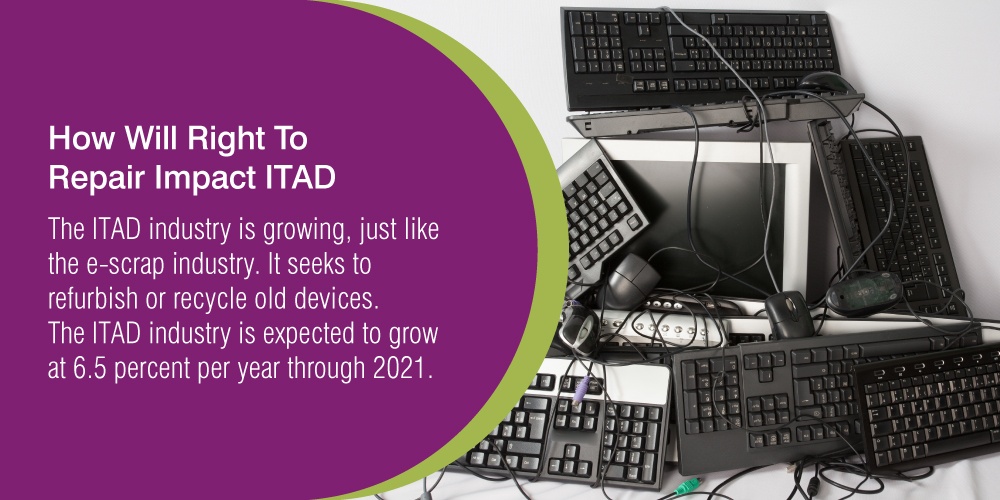The right to repair is becoming an increasingly important issue as technology evolves. In 2021, the president issued an executive order directing the Federal Trade Commission to draft regulations limiting OEMs’ ability to restrict independent repairs of their products.
One of the directive’s primary goals is to make repairing items like smartphones, laptops, and tablets more effortless and cheaper.
How Will Right To Repair Impact ITAD
The ITAD industry is growing, just like the e-scrap industry. It seeks to refurbish or recycle old devices. According to the United Nations, more than 53.6 million tons of e-scrap were generated internationally in 2019, of which only 17.4 percent was recycled. The ITAD industry is expected to grow at 6.5 percent per year through 2021.
However, some worry that this will negatively impact the ITAD industry, as it will be harder to refurbish or recycle products that have been repaired by someone other than the OEM.
Others believe that the right to repair will help the ITAD industry by making it easier for people to fix their own devices and thus extend their life cycle. It makes it easier and cheaper to recycle or refurbish old machines, which is good for the environment and the economy. It creates jobs in the recycling and refurbishing industries and reduces the amount of electronic waste sent to landfills.
Only time will tell which of these predictions is correct. In the meantime, it will be interesting to see how the right to repair debate unfolds and what impact it has on the ITAD industry.
Right To Repair and OEMs
OEMs have been fighting the right to repair movement because they don’t want people to repair their devices themselves. Fighting right to repair legislation and using proprietary designs or parts in their machines allow companies to force users into buying new products when their old ones fail or otherwise face costly specialist repairs.
They would rather sell people new devices than have them fix their old ones. However, this strategy may not be sustainable in the long run, as more and more people are becoming aware of the right to repair and are demanding the ability to fix their own devices.
Only time will tell what impact the right to repair movement will have on OEMs. In the meantime, it will be interesting to see how they respond to this challenge.
The Future and Avail Recovery
The right to repair is an important issue that will likely impact the ITAD industry significantly. How the right to repair impacts ITAD is still unknown, but it will be interesting to see how the debate unfolds and its consequences for the industry. OEMs are likely to be affected the most by this movement, as they are the ones who are fighting it the hardest. Only time will tell how this battle plays out.
No matter how things change, Avail Recovery will be there to help. We can work with your company to recycle or refurbish your old devices, ensuring that they are dealt with in an environmentally responsible manner. We also offer hardware trade-in programs to make your next PC refresh that much easier.
Curious to learn more? Contact Avail today to learn more about how we can help and receive a free project assessment.

